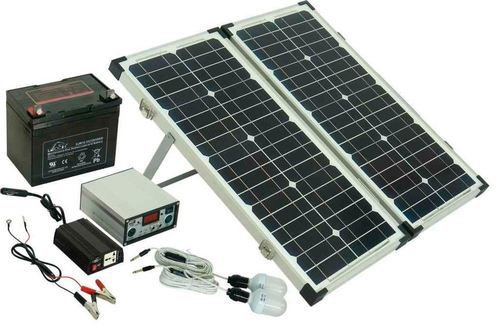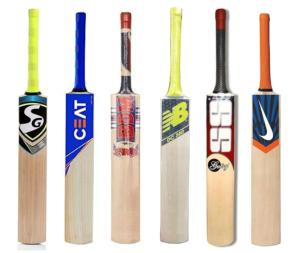Choosing the Right Solar Inverter: What Every Homeowner Should Know

Choosing the right solar inverter is one of the most critical decisions you’ll make when designing or upgrading your solar panel system. While solar panels tend to get all the attention, it’s the solar inverter that plays the pivotal role of converting the direct current (DC) electricity generated by your panels into usable alternating current (AC) electricity for your home or business. A good inverter ensures maximum energy efficiency, system longevity, and cost-effectiveness. In this article, we’ll guide you through everything you need to know to choose the best solar inverter for your specific needs.
Understanding What a Solar Inverter Does
Before diving into the selection process, it’s essential to understand what a solar inverter does. Solar panels generate electricity in the form of direct current (DC), but most household appliances and the electrical grid use alternating current (AC). The inverter’s main role is to convert DC into AC so the electricity can be used effectively or fed back into the grid.
Apart from this fundamental function, modern inverters also perform several other important tasks such as:
- Monitoring system performance
- Communicating with the utility grid
- Detecting faults and managing safety shutdowns
- Maximizing energy harvest through MPPT (Maximum Power Point Tracking)
Choosing the wrong inverter could lead to inefficiencies, limited system control, and reduced overall return on investment.
Types of Solar Inverters
There are several types of solar inverters available, each designed for specific system layouts and user requirements.
String Inverters
String inverters are the most common type and are often used in residential and small commercial systems. They connect a series (or “string”) of solar panels to a single inverter.
Pros:
- Cost-effective
- Simple to install and maintain
- Well-suited for installations with minimal shading
Cons:
- Efficiency drops if one panel is shaded
- Limited system expandability
Microinverters
Microinverters are small inverters installed at each individual solar panel. Instead of one central inverter, each panel has its own inverter.
Pros:
- Optimizes performance for each panel individually
- Great for roofs with shading or complex orientations
- Easier to monitor performance at panel level
Cons:
- Higher upfront cost
- Potentially more maintenance points
Power Optimizers + Central Inverter
This is a hybrid system where each panel is paired with a power optimizer, which conditions the DC power before it reaches a central inverter.
Pros:
- High efficiency even with shading
- Cost-effective compared to microinverters
- Allows panel-level monitoring
Cons:
- Slightly more complex than string inverter systems
- Still relies on a central inverter component
Hybrid Inverters
Hybrid inverters can manage power from solar panels, the grid, and battery storage systems simultaneously. They are ideal for users who plan to add batteries now or in the future.
Pros:
- Supports battery storage
- Great for energy independence and backup power
- Smart energy management features
Cons:
- More expensive than traditional inverters
- Installation complexity may increase
Factors to Consider When Choosing a Solar Inverter
Selecting the right solar inverter depends on a combination of technical and personal factors. Here are the key considerations:
System Size and Capacity
Ensure the inverter can handle the power output of your solar array. Typically, the inverter’s capacity should be close to the total capacity of your solar panels, usually in kilowatts (kW). Undersizing can increase efficiency but might limit power during peak sun hours, while oversizing can lead to unnecessary costs.
Roof Orientation and Shading
If your roof has multiple angles or areas with partial shading throughout the day, microinverters or power optimizers are preferable as they reduce the impact of shading on overall system performance.
Budget Constraints
Cost plays a significant role in the selection process. While string inverters are cheaper, they may not offer the flexibility or monitoring that microinverters or hybrid inverters provide. It’s essential to balance cost with features and performance.
Efficiency Ratings
Inverter efficiency indicates how well it converts DC to AC electricity. Look for inverters with high efficiency ratings—generally above 95%. Higher efficiency means less energy loss and more savings over time.
Warranty and Reliability
A solar inverter is expected to last around 10–15 years. Check the warranty terms and reputation of the manufacturer. Some brands offer up to 25 years of warranty for microinverters and optimizers.
Monitoring Features
Modern inverters come with built-in monitoring systems that allow you to track the performance of your solar panel system. Web-based or mobile app monitoring can alert you to issues and help you understand your energy usage.
Grid-Tied vs Off-Grid
Decide whether your system will be connected to the power grid or operate independently. Off-grid systems require inverters capable of battery management and often include built-in chargers and controllers.
Leading Solar Inverter Brands
When investing in a solar inverter, it’s wise to choose a reputable brand known for performance, durability, and support. Some of the top manufacturers in the solar inverter market include:
- SMA: German-engineered inverters known for reliability
- Fronius: High-efficiency inverters with advanced monitoring
- SolarEdge: Specializes in power optimizers and hybrid systems
- Enphase: Market leader in microinverters
- Growatt: Offers affordable and versatile inverter options
Each brand offers various models suitable for different applications, so comparing specifications based on your needs is important.
Installation and Compatibility
Always work with a certified and experienced solar installer. The installer will help determine compatibility between the inverter and your chosen solar panels, battery systems, and monitoring tools. Inverter placement, ventilation, and maintenance access are also factors the installer will consider.
Regulatory and Safety Compliance
Ensure the inverter complies with local standards and regulations for grid connection, safety, and performance. Many countries have certification requirements such as UL (USA), CE (Europe), and CEC (Australia). Using compliant equipment helps with rebates, warranties, and insurance claims.
Future-Proofing Your Solar System
As solar technology evolves, future-proofing becomes a smart strategy. Choosing a hybrid or modular inverter system allows you to add battery storage or expand your system without replacing the inverter. This flexibility can save money and time in the long run.
Conclusion
The solar inverter is the heart of your solar power system, silently working behind the scenes to convert and manage the electricity your panels produce. Choosing the right one means balancing efficiency, cost, expandability, and reliability. Whether you opt for a string inverter, microinverter, power optimizer, or hybrid model, understanding your unique energy needs and site conditions will guide you toward the best decision.

